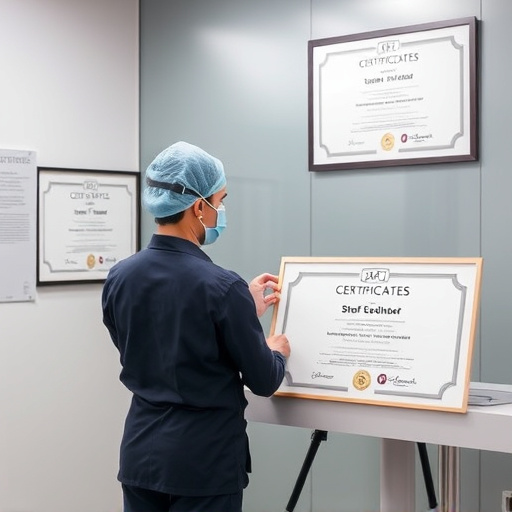Turbo spool management is crucial for turbocharged engines' overall performance. Quick turbo response enhances power delivery, improves acceleration, and boosts low-to-mid range torque, leading to better fuel economy and reduced emissions. Measuring cold air intake (CAI) performance gains involves baseline testing of engine metrics followed by installation and subsequent measurements of key parameters like air pressure, airflow rates, and throttle response. Optimizing turbo spool through strategic methods, such as incorporating a CAI system, can significantly enhance engine performance by routing cooler, denser air for optimal combustion, reducing backpressure, and enabling faster turbo spin-up for smoother power delivery across all RPMs.
In today’s high-performance automotive landscape, turbo spool improvements are revolutionizing engine dynamics. Understanding turbo spool, its critical role in engine efficiency, and its direct impact on overall vehicle performance is essential for enthusiasts and mechanics alike. This article delves into the intricacies of turbo spool, exploring key areas such as measuring cold air intake performance gains and optimizing spool for peak efficiency and speed.
- Understanding Turbo Spool and Its Impact on Engine Performance
- Measuring Cold Air Intake Performance Gains
- Optimizing Turbo Spool for Maximum Efficiency and Speed
Understanding Turbo Spool and Its Impact on Engine Performance

Turbo spool, a critical component in turbocharged engines, significantly influences overall engine performance. It refers to the speed at which the turbocharger’s turbine wheels rotate, directly impacting the efficiency and responsiveness of the engine. When the turbo spool responds swiftly, it enables the engine to deliver instant power, resulting in improved acceleration and better low-to-mid range torque delivery. This is particularly beneficial for vehicles seeking enhanced cold air intake performance gains measured through dynamic driving tests.
The impact of efficient turbo spooling extends beyond initial acceleration. It contributes to a smoother power band throughout the rev range, ensuring the engine maintains optimal efficiency as speeds increase. This precision in turbo spool management allows drivers to experience improved fuel economy and reduced emissions, all while enjoying the exhilarating performance typically associated with turbocharged engines.
Measuring Cold Air Intake Performance Gains

Measuring Cold Air Intake Performance Gains involves evaluating the efficiency and benefits of upgrading to a cold air intake system. This process typically starts with baseline testing, where the engine’s performance metrics are recorded under standard conditions. Afterwards, the new cold air intake is installed and another set of measurements are taken. Key parameters like air pressure at idle, airflow rates, and throttle response are compared before and after the upgrade. These data points help in quantifying the cold air intake performance gains, such as increased horsepower, torque, and improved fuel efficiency.
The results can offer valuable insights into how well the cold air intake system is enhancing the engine’s breathing capabilities. In many cases, significant improvements in cold air intake performance gains can be observed, leading to better overall engine output and drivability. This data-driven approach ensures that modifications are not just speculative but backed by tangible evidence of benefits, making it easier for enthusiasts and mechanics to make informed decisions regarding engine tuning and upgrades.
Optimizing Turbo Spool for Maximum Efficiency and Speed

Optimizing Turbo Spool for maximum efficiency and speed involves a strategic approach to enhance engine performance. One key aspect is incorporating a cold air intake system, which can significantly boost performance gains measured in both horsepower and torque. By routing cooler, denser air into the engine, cold air intakes ensure optimal combustion, leading to improved turbo spool response.
This enhancement is particularly crucial for turbo-charged vehicles, as it reduces backpressure, allowing the turbocharger to spin up faster and efficiently. The result? Quicker acceleration and smoother power delivery across the entire RPM range. Moreover, modern cold air intake designs often include high-flow filters and optimized ducting, further maximizing airflow and ensuring sustained performance gains over time.
Turbo spool improvements, as discussed in this article, offer significant benefits to engine performance. By understanding turbo spool dynamics and optimizing key factors, such as cold air intake design for enhanced efficiency, substantial performance gains can be realized. Measuring these improvements showcases the impact on engine speed and overall vehicle performance, making it a crucial aspect for car enthusiasts seeking both power and fuel economy.














